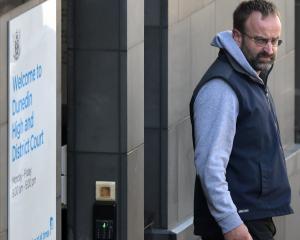
His announcement of the $32.9 billion land transport programme, boyish smirk and all, was particularly galling.
He said he was "sick and tired" of seeing how much money was going into cycleways and that speed bumps had been "infesting" the streets while potholes were not being filled.

Civis is not best pleased with the halving of walking and cycleway spending and also understands the maxim of build it and more cars will come.
More cars mean more CO2 and more speed means more serious crashes.
Mr Brown, pushing productivity, has also announced proposed speed limit increases to 110kmh on three divided highways, again dividing opinion.
While the transport minister is not averse to misleading hyperbole, his opponents also go for it in their criticisms.
Mr Brown is either the golden boy of Cabinet (although not so young at age 33) or the devil’s sidekick.
The transport plan was either terrific or terrible in just about every way.
The worthy media proceeded to excoriate the programme as well as the speed limit proposals.
One outlet mocked the potential 49 seconds saved by faster speeds on the 17.7km motorway between Rolleston and Christchurch.
Another lined up a university expert (no surprise there) to slam the alleged productivity gains as "nonsense".
Mr Brown multiplied the 51 seconds saved on Christchurch’s southern motorway (his count) by the 38,000 vehicles and came to 538 hours saved a day.
That is heading towards nearly 200,000 hours a year.
Sure, not all light vehicles (the 90kmh limit would stay for big trucks) could travel at the speed limit during congested peaks. And the motorway will often finish in a bottleneck.
But the point of road improvements and higher speed limits is that small amounts add up. Otherwise, you would never justify upgrades.
It made a difference, for example, to slice straight ahead just north of Waikouaiti instead of the circuitous former route.
Eliminating MacArthurs Bend on Dunedin’s Northern Motorway made for a smoother and quicker path up the hill heading south from Pigeon Flat.
Fuel is saved by both advances.
Auckland’s Waterview Tunnel (completed in 2017 for $1.4b) has cut travel times and congestion.
The point is that one can disagree with the balance of the transport programme while also acknowledging Mr Brown’s argument about time and productivity. Efficiency and productivity are important.
The planned increased limit of 110kmh for the Kāpiti Expressway north of Wellington also signals to motorists that they are being given permission "to drive to the conditions".
New Zealanders often drive too fast and make the 100kmh on the open road a "target". That is dangerous in many places and poor conditions.
However, 110kmh feels comfortable on multi-lane, divided and mostly straight highways. The expressway was also constructed to a 110kmh standard.
Mr Brown’s latest suggestion is to increase limits on some yet-to-be-built roads to 120kmh. The immediate issue is that the cost to engineer a road to that level is considerably higher.
This, on balance with other considerations, seems like putting a foot on the accelerator too far.
There are many better uses for the extra money, including cycleways.
The most efficient time to develop them is when new roads are being built. Fortunately, a useful cycleway was built simultaneously alongside newer motorway sections just north of Christchurch.
This will prove a long-term asset providing long-term benefits as e-bike numbers climb.
Although Civis rides in a different lane from Mr Brown, it should be acceptable to sometimes give him a little credit.
Despite political polarisation and the stark divergence of attitudes, one side is seldom all good and the other totally bad.










